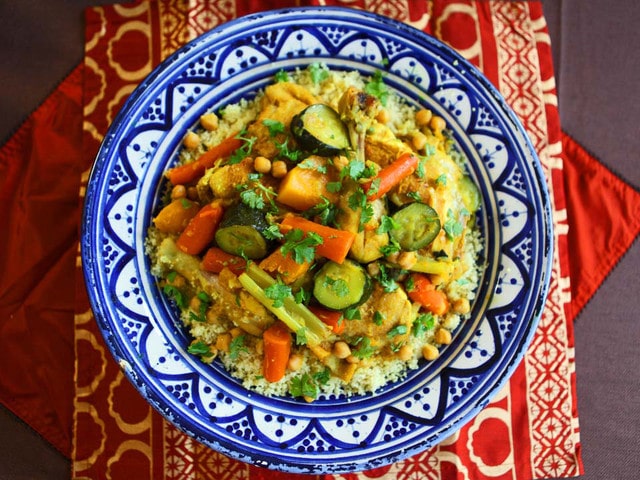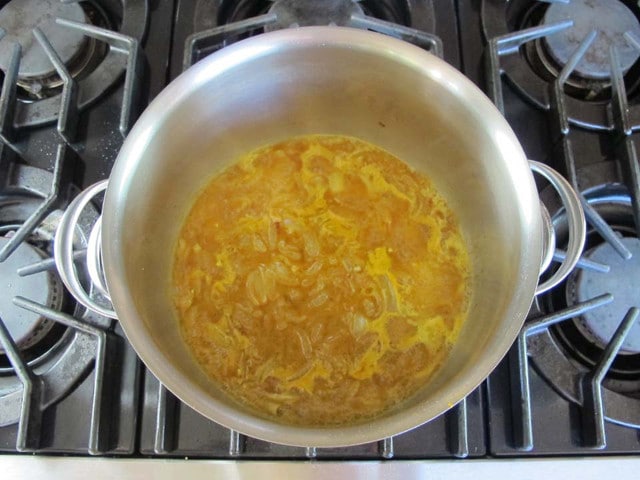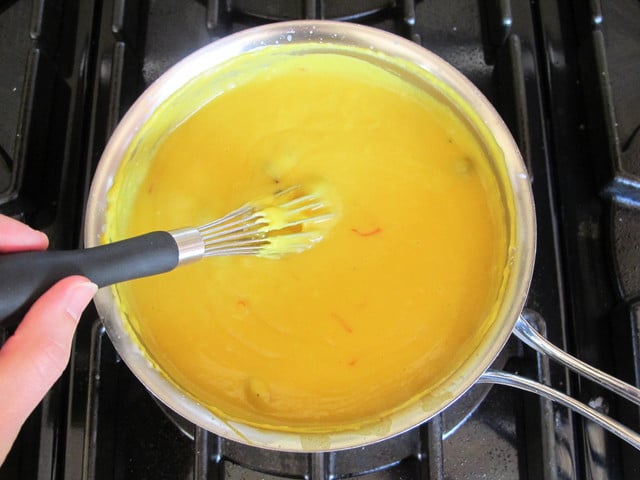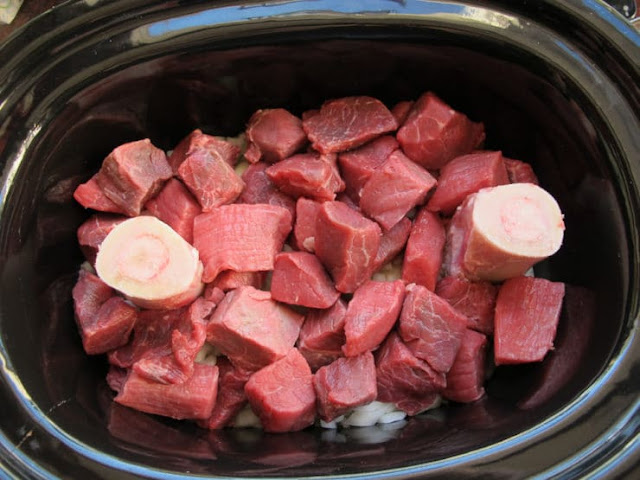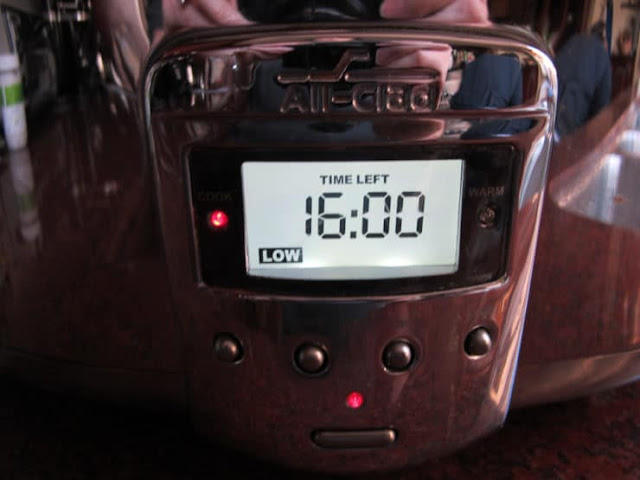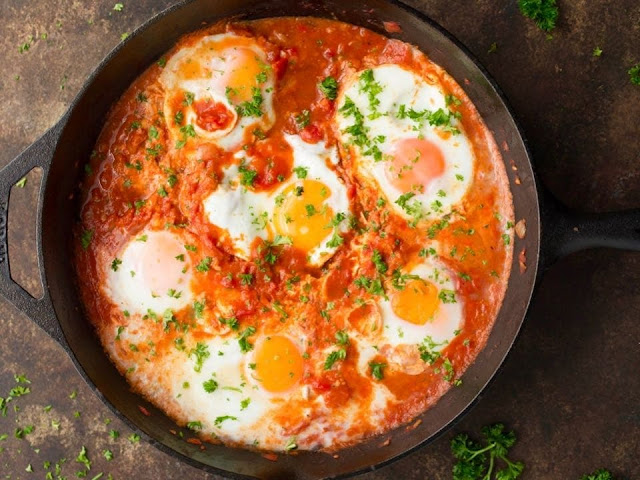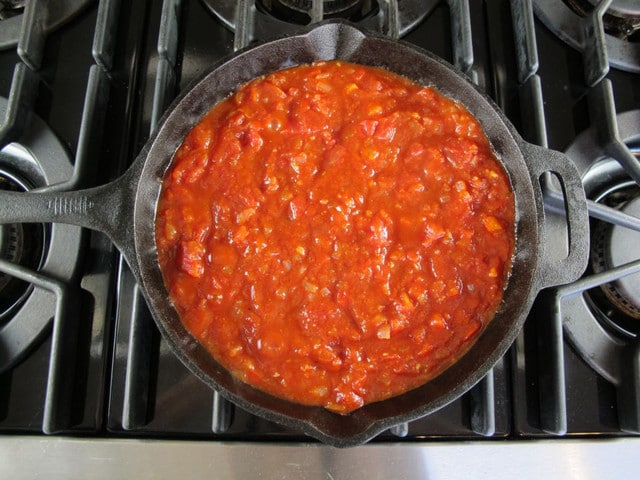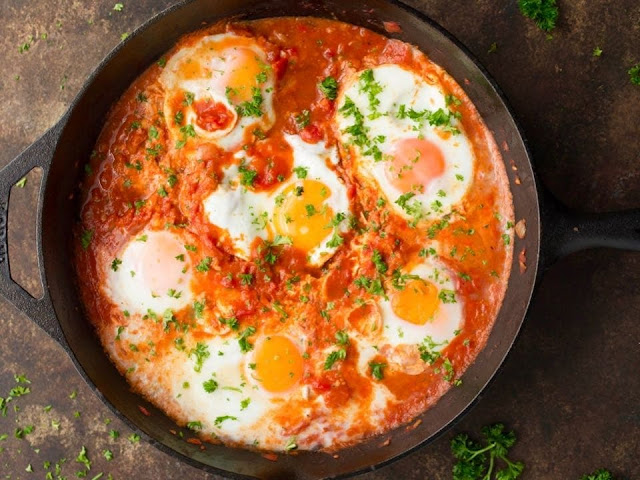- 3 tbsp extra virgin olive oil divided
- 1 whole chicken 3-4 pounds, cut into pieces
- 2 whole onions peeled and sliced
- 2 tsp minced fresh garlic
- 3 1/2 cups low sodium chicken broth divided
- 2 tsp salt divided
- 1 tsp turmeric heaping
- 1/2 tsp cumin
- 1/4 tsp cayenne pepper
- 1/4 tsp black pepper
- 1 lb butternut squash, peeled, cubed and seeded about 3/4 lb. peeled butternut squash cubes
- 3/4 lb zucchini about 2 medium, cut into 1-inch pieces
- 3/4 lb carrots peeled and cut into 2-inch pieces
- 2 celery ribs cut into 2-inch pieces
- 1 3/4 cups cooked chickpeas 1 can
- 10 oz instant couscous 1 box
- 1 tbsp fresh chopped cilantro or parsley

2. Reduce heat to medium and add sliced onions to the pot. Saute the onions, stirring frequently, until the onions soften and begin to caramelize. Add the garlic and saute for a minute more until fragrant.

3. Add 1 1/2 cups low sodium chicken broth to the pot. Stir in 1 1/2 tsp salt, 1 tsp turmeric, 1/2 tsp cumin, 1/4 tsp cayenne and 1/4 tsp black pepper. Scrape any brown bits from the bottom of the pan as you bring the stock to a boil.
4. Add the chicken pieces to the pot, using a pair of tongs to coat them with sauce before placing them skin-side up. Reduce heat to a low simmer and cover the pot, vented slightly. Let them simmer on low heat for 45 minutes.
5. Remove chicken pieces from the pot and add the squash, zucchini, carrots and celery, stirring them into the broth to make sure each vegetable is evenly coated. Bring to a boil. Add the chicken pieces back to the pot on top of the vegetables. Cover the pot tightly and reduce heat to a low simmer. Let the vegetables cook for 15 minutes.
6. Gently stir the chickpeas into the chicken vegetable mixture. Let the mixture cook covered for 5-10 more minutes until the largest vegetable chunks are tender.

Stir in the couscous and cover the pot. Remove the pot from heat and let the couscous steam for 5 minutes, until tender.

8. Fluff the cooked couscous with a fork and place it on a serving platter. Use a slotted spoon to place the cooked chicken and vegetables on top of the couscous, then sprinkle with chopped cilantro or parsley. Pour the cooking liquid into a large gravy boat.
Top each serving of couscous with a bit of cooking liquid to moisten. Can be served with spicy sauce or harissa on the side.
